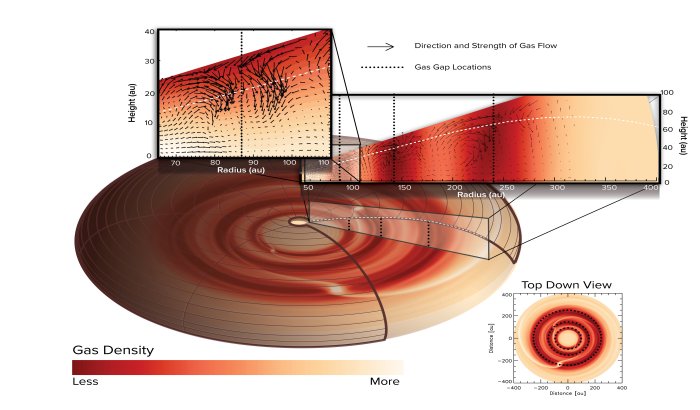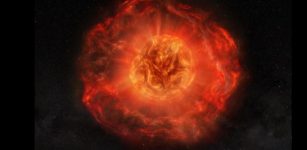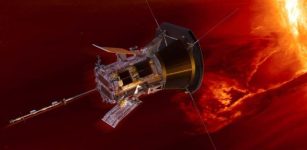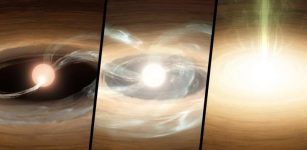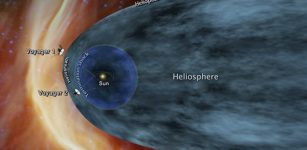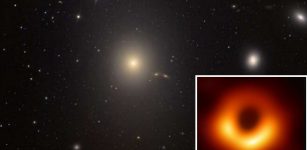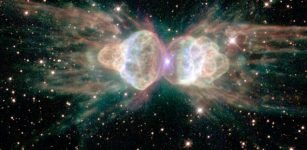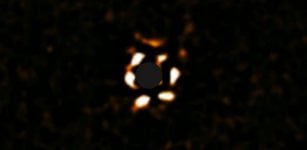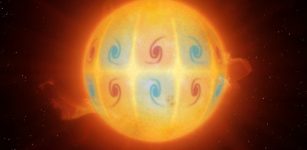Gas ‘Waterfalls’ Reveal Infant Planets Around Young Star
Eddie Gonzales Jr. – MessageToEagle.com – For the first time, astronomers using ALMA have witnessed 3D motions of gas in a planet-forming disk. At three locations in the disk around a young star called HD 163296, gas is flowing like a waterfall into gaps that are most likely caused by planets in formation. These gas flows have long been predicted and would directly influence the chemical composition of planetary atmospheres.
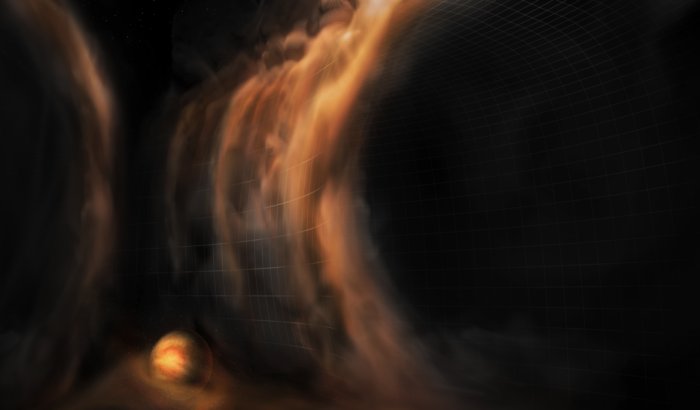 Artist impression of gas flowing like a waterfall into a protoplanetary disk gap, which is most likely caused by an infant planet. Credit: NRAO/AUI/NSF, S. Dagnello
Artist impression of gas flowing like a waterfall into a protoplanetary disk gap, which is most likely caused by an infant planet. Credit: NRAO/AUI/NSF, S. Dagnello
To get more certainty that these gaps are actually caused by planets, and to get a more complete view of planet formation, scientists study the gas in the disks in addition to dust. 99 percent of a protoplanetary disk’s mass is gas, of which carbon monoxide (CO) gas is the brightest component, emitting at a very distinctive millimeter-wavelength light that ALMA can observe.
“With the high fidelity data from this program, we were able to measure the gas’s velocity in three directions instead of just one,” said lead author Richard Teague from the University of Michigan, said in a press release.
“For the first time, we measured the motion of the gas rotating around the star, towards or away from the star, and up- or downwards in the disk.”
Teague and his colleagues saw the gas moving from the upper layers towards the middle of the disk at three different locations.
“What most likely happens is that a planet in orbit around the star pushes the gas and dust aside, opening a gap,” Teague explained. “The gas above the gap then collapses into it like a waterfall, causing a rotational flow of gas in the disk.”
This is the best evidence to date that there are indeed planets being formed around HD 163296. But astronomers cannot say with one hundred percent certainty that the gas flows are caused by planets. For example, the star’s magnetic field could also cause disturbances in the gas.
“Right now, only direct observation of the planets could rule out the other options. But the patterns of these gas flows are unique and it is very likely that they can only be caused by planets,” said co-author Jaehan Bae of the Carnegie Institution for Science, who tested this theory with a computer simulation of the disk.
The location of the three predicted planets in this study corresponds to the results from last year: they are likely located at 87, 140 and 237 AU. (An astronomical unit – AU – is the average distance from the Earth to the Sun.) The closest planet to HD 163296 is calculated to be half the mass of Jupiter, the middle planet is Jupiter-mass, and the farthest planet is twice as massive as Jupiter.
“Planets form in the middle layer of the disk, the so-called midplane. This is a cold place, shielded from radiation from the star,” Teague explained. “We think that the gaps caused by planets bring in warmer gas from the more chemically active outer layers of the disk and that this gas will form the atmosphere of the planet.”
Teague and his team did not expect that they would be able to see this phenomenon. “The disk around HD 163296 is the brightest and biggest disk we can see with ALMA,” said Teague. “But it was a big surprise to actually see this gas flows so clearly. The disks appear to be much more dynamic than we thought.”
Research is published in Nature.
Written by Eddie Gonzales Jr. – MessageToEagle.com Staff

